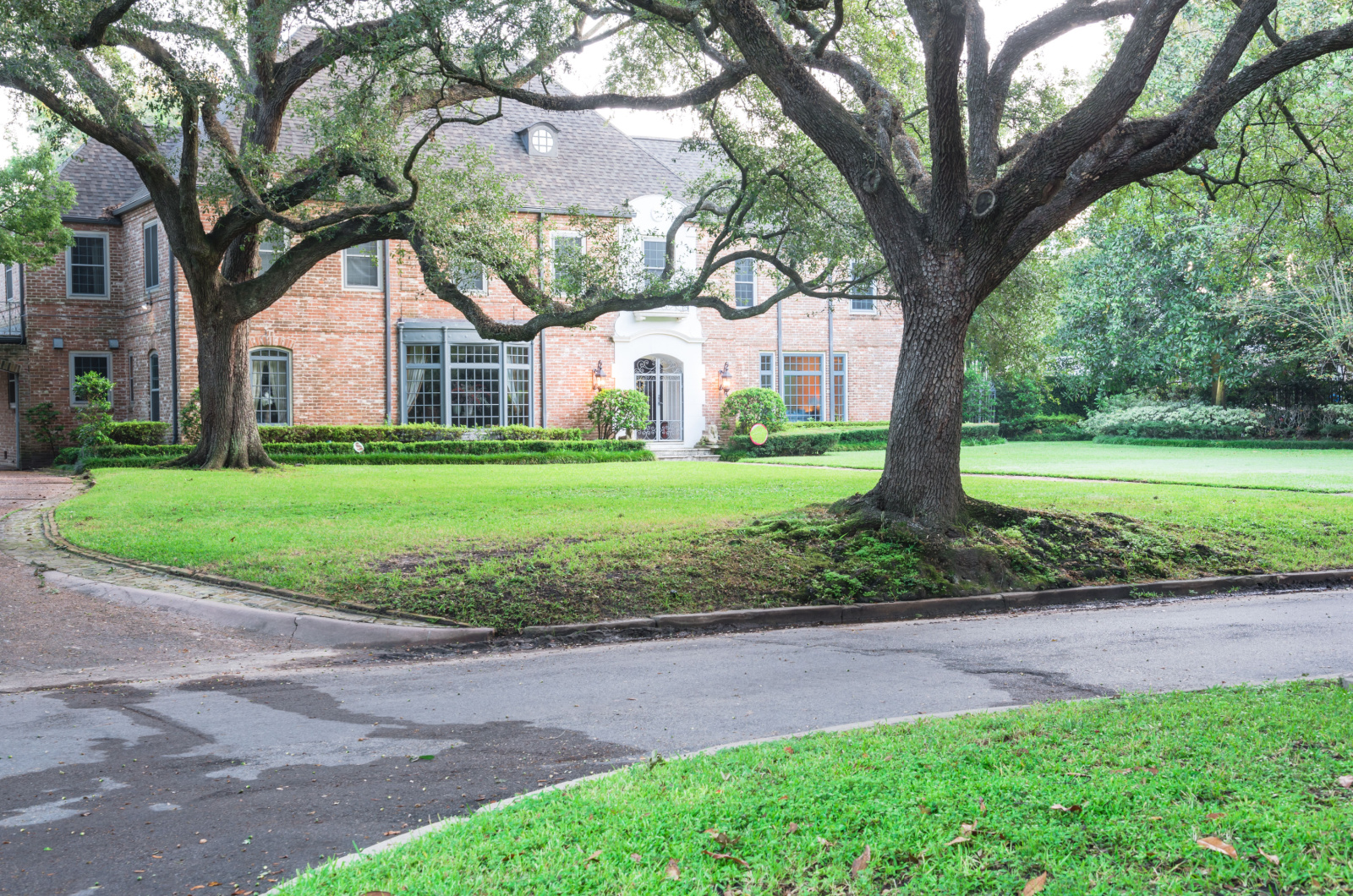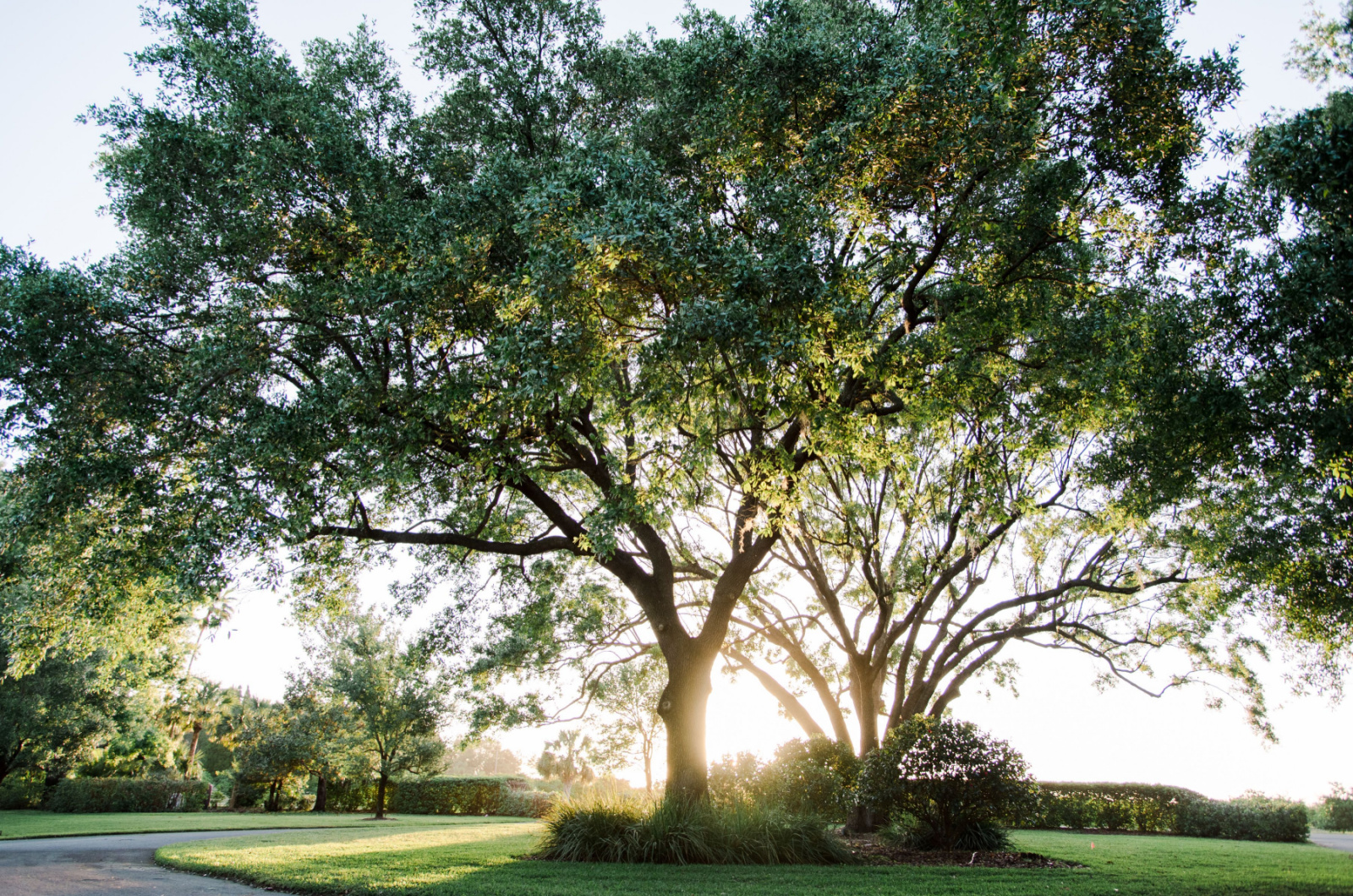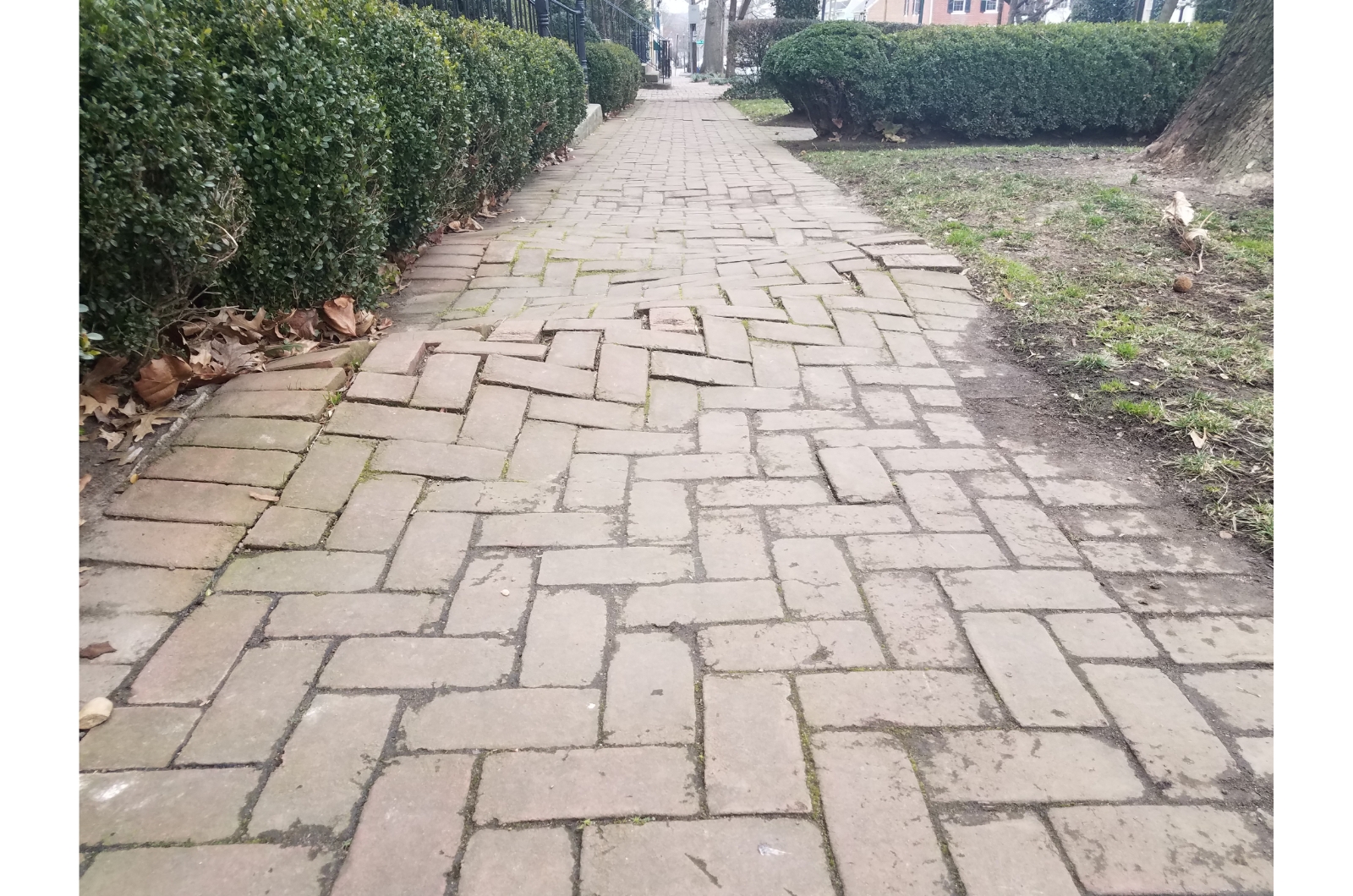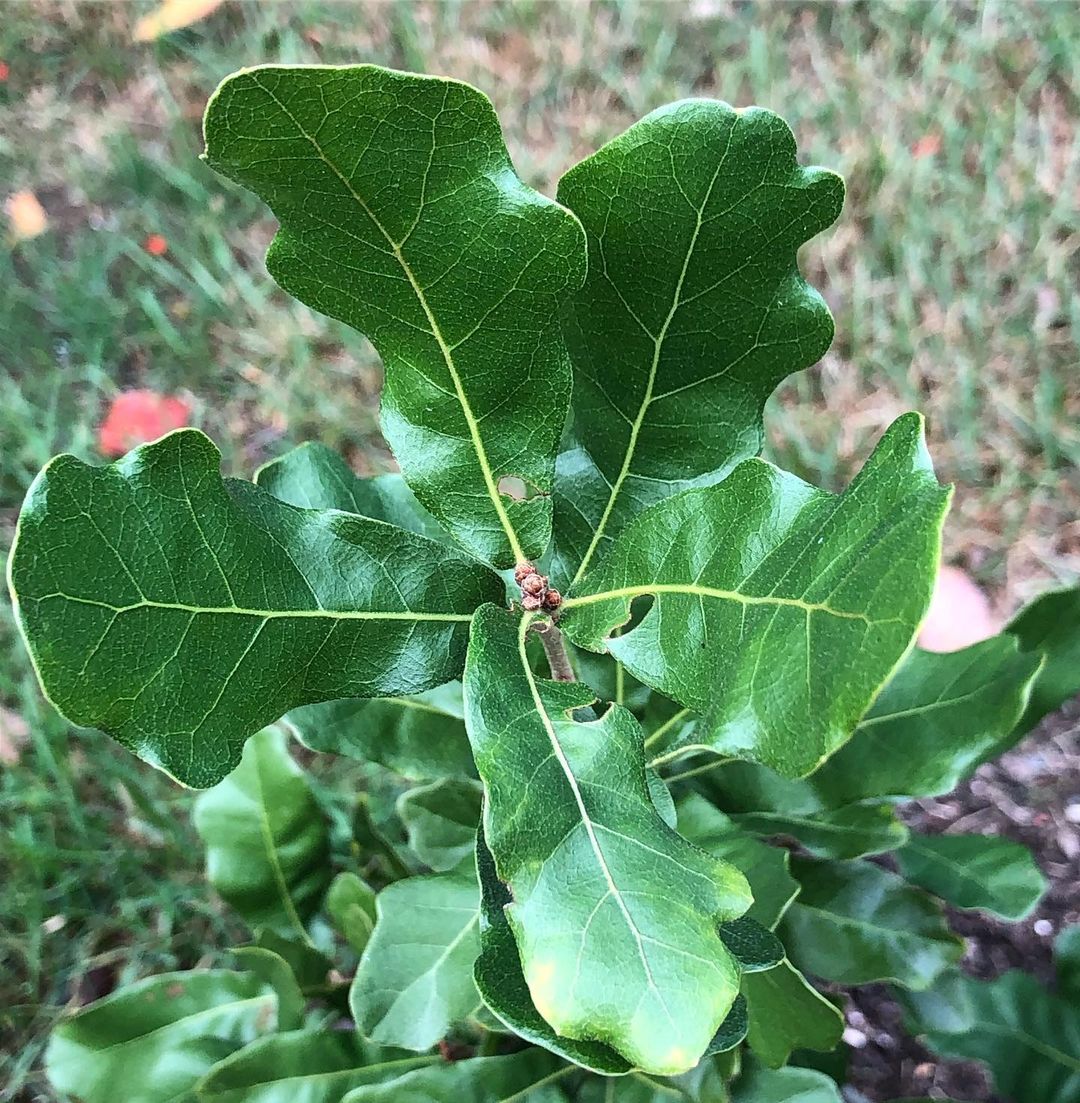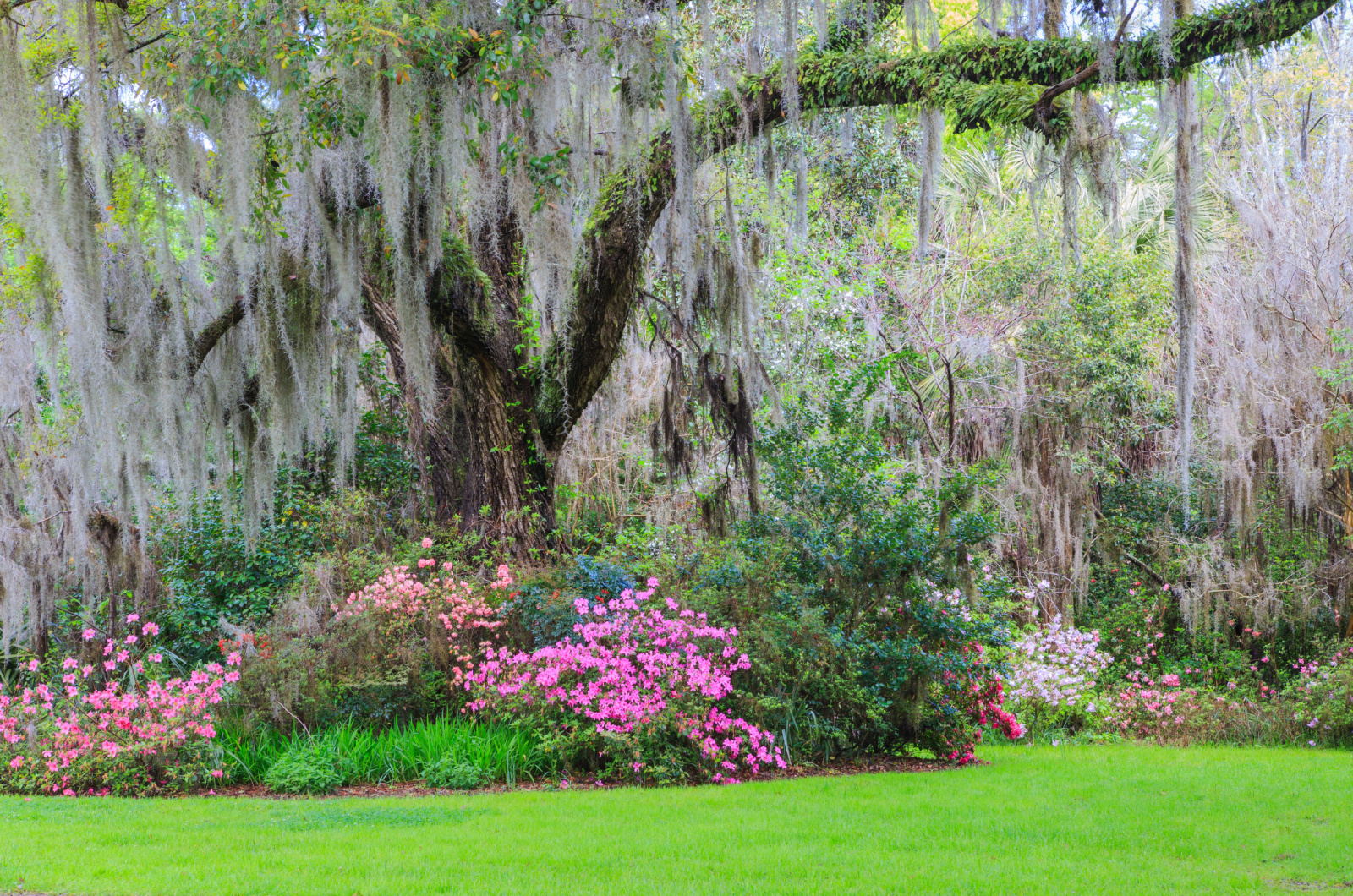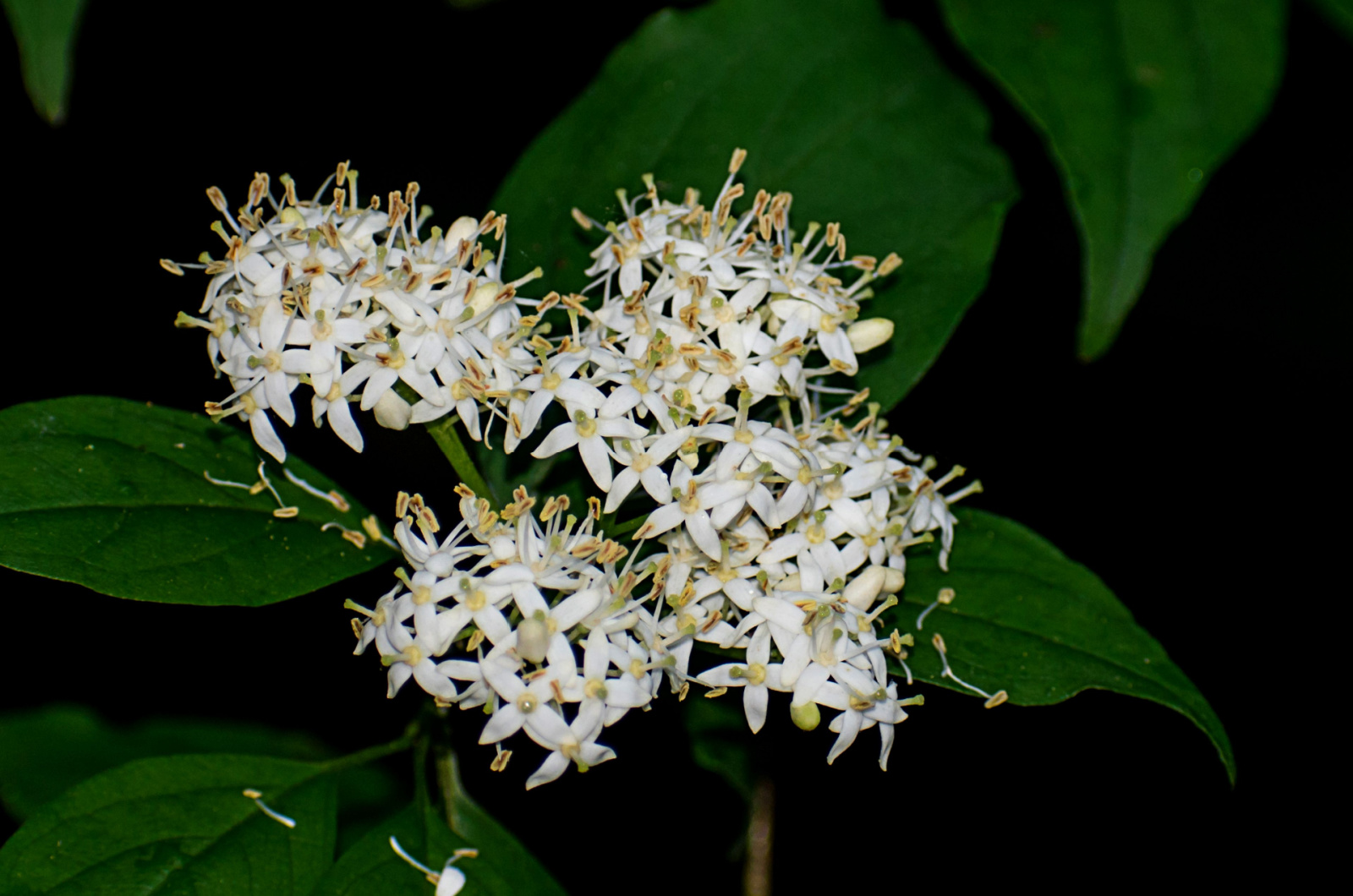I can’t tell you how many times I’ve seen residents removing large trees from their yard because they’re lifting up sidewalks and roads, entering their sewer pipes, etc.
This should go without saying, but all plants grow after being put into the ground. The final height and width depend on the species, but we all know how big trees can get.
If you want to plant and keep a tree on your property, there are some things you need to consider before planting.
Here’s how to choose the perfect species for your Florida yard!
#1 Mature Height
One of the first things you need to bear in mind is the mature height of the tree and the size of your garden.
Live oaks are quite popular here in Florida and we consider them a staple. Yet, they can spread anywhere between 60-120 feet.
If you have enough room to accommodate this specimen, know that it looks best as a centerpiece and away from any power lines.
I adore oak trees, but they’re simply too big for some homeowners. Luckily, there are other Florida-native oaks you can plant.
Chapman’s oak is on top of my list because it only grows to 6-15 feet tall. It is deciduous and will give your garden a gorgeous fall color. If you want an evergreen species instead, go with a sandhill oak. It stays compact with a height of 16 feet and spread of 6 feet.
If your yard is large enough to fit a live oak, make sure you’re committed. These trees can live for 300 years with proper care. That means knowing how and when to prune trees among other things.
All trees need regular trimming, but if you have a tall specimen such as a live oak, it’s best to contact professionals. You can find certified arborists on TreesAreGood.
The thing is, maintaining a large live oak is pricey in the long run, so call a few businesses to see which one has the best offer in your region.
#2 Root System
Your yard doesn’t just need to accommodate for the entire above-ground growth of your trees. You need to have enough room for the roots to grow without hindrance.
They can spread 2-4 times past the canopy. So, if you have a 30 feet spread on a single side of the tree, chances are you have roots at least 60 feet wide (90 is more likely!).
Trees developed this ability to keep them upright and rooted during harsh Florida storms. Yet, if you don’t want to kill tree roots with bleach or use other methods, choose a species that can grow undisturbed in your yard.
A good rule of thumb is to plant large trees at least 12 feet away from your sidewalk, driveway, roads, etc. (at least when it comes to roots). Even this is not ideal, but it’s the bare minimum.
Many neighborhoods only have a little bit of green surface between the sidewalk and the road where they can plant trees. If they’re not careful with the species, it’s only a matter of time before the roots start to lift up everything.
Tree roots can also damage foundations, sewer lines, and irrigation systems. That’s why you should plant them as far away from your home as possible. Still, find a balance so that you don’t ruin the roads.
#3 Deciduous Or Evergreen
Oaks are amazing because they are the keystone species of Florida. That means that they hold an entire ecosystem together. Oaks alone host 395 caterpillar species in Florida. (1)
And the best part about them is that they come in deciduous and evergreen variants. There are many other trees for wildlife and diversity you can incorporate into your yard. When it comes to Florida, those are black cherry, red maple, American elm, white ash, and slash pine.
Both tall and short deciduous and evergreen trees benefit the ecosystem. If you can, incorporate a couple of species and see how it brightens up your yard.
#4 Sun Exposure
There are two things to bear in mind when it comes to sun exposure. The first one is the amount your yard gets and that your trees need. You can always consult a light exposure guide if you’re not sure what certain terms mean.
If your garden doesn’t get too much sunlight, you can go with species such as flowering and swamp dogwoods, sugar maple, and southern magnolias.
Many Florida gardens get full sun, so it’s best to go with varieties that can handle that exposure. Try planting native oak varieties, bald cypress, and Florida elm.
Another thing you should be aware of is that all these trees will create shade in your garden. The grass beneath them may thin and turn yellow. When this happens, fill the area with shade-resistant ground covers.
Trying to maintain a sun-loving lawn in deep tree shade is a battle you can’t win here in Florida. No one can say that grasses are common in forest understories and that trees are something we expect to see on prairies.
#5 Soil Moisture
One final thing you need to bear in mind before planting trees in your backyard is the type of growing medium you have.
If you have a well-draining soil that’s leaning towards dryness, you can plant blue beech, hog plum, scrub hickory, shiny sumac, and sparkleberry.
And if your growing medium is moist to wet and soggy, you should stick to swamp dogwood and coastal plain willow.
All of these varieties are keystone species around Florida, so don’t miss out on all the benefits you can bring to your ecosystem.
Now all that’s left is for you to find the easiest way to plant a tree, and that’s it!
References:
1. Florida’s Keystone Plants (n.d.). UF IFAS: Gardening Solutions.


